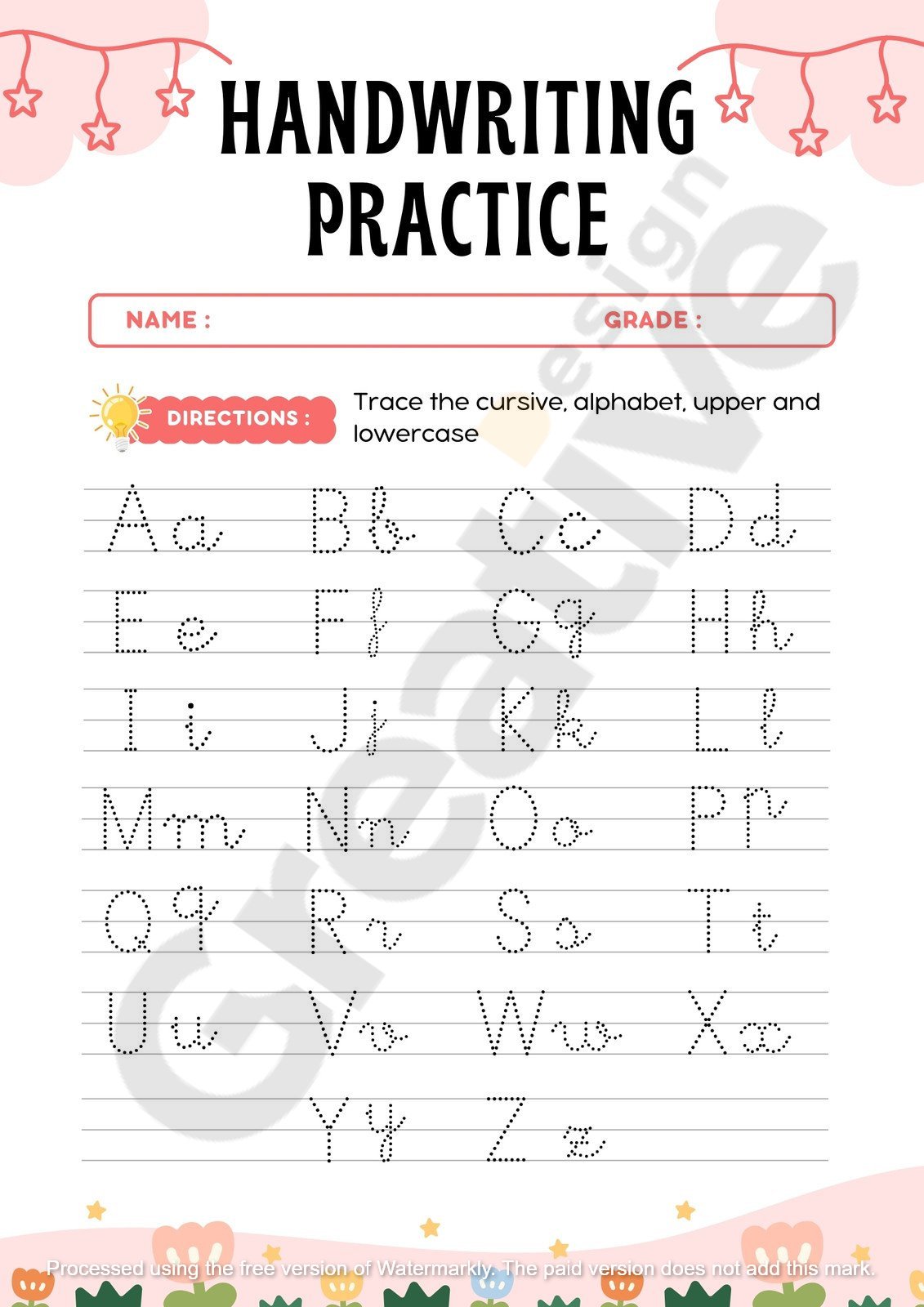
Handwriting is one of those skills that seems simple—until you try teaching it to a wiggly five-year-old who’d rather be playing with their toys. But let’s be real: handwriting practice in early childhood is as important as learning the ABCs.
For young learners‚ handwriting isn’t just about making words look neat and developing essential cognitive and motor skills. And let’s not forget the satisfaction of a well-formed letter—kids feel like little geniuses when they nail it! That’s where worksheets kindergarten teachers and parents use come into play‚ especially those in the white-red lined style format.
See More Handwriting Practice Worksheets Kindergarten Template
When kids use handwriting practice worksheets‚ they learn to write and strengthen their tiny hand muscles. It helps with future tasks like buttoning shirts‚ using scissors‚ or (eventually) typing on a keyboard.
Tracing and copying letters on worksheets kindergarten students use daily helps reinforce letter shapes‚ ensuring children recognize them quickly when reading.
Learning to write requires a child to process information visually while guiding their hand movements precisely. The white-red lined style on worksheets helps with alignment‚ making it easier for children to understand spacing.
Not all handwriting practice sheets are created equal! The best ones are designed to be engaging‚ supportive‚ and effective. Here’s what to look for:
When kids are just starting‚ big letters are easier to copy. Small letters? Not so much. That’s why worksheets kindergarten students use often feature oversized‚ clear fonts.
Good handwriting sheets don’t just throw kids into the deep end. They start with guided tracing before transitioning to independent writing.
Learning should feel fun‚ not like a chore! Worksheets with pictures‚ themed activities‚ and reward stickers keep kids engaged.
If you’ve ever seen a lined sheet with a red baseline and white background‚ you’ve encountered the white-red-lined style. This structured format is specifically designed for beginner writers.
The white-red lined style gives kids clear visual boundaries‚ ensuring they don’t write letters that float away or scrunch together.
Unlike single-line paper‚ which offers no guidance‚ the white-red-lined style helps children stay consistent with letter size‚ leading to neater handwriting.
A worksheet is only as good as how it’s used! Follow these steps to make the most of handwriting practice sessions:
Start with tracing‚ move to copy‚ and then encourage freehand writing once confidence builds. Young children thrive on clear instructions and gradual steps. Introduce each letter or word by first showing them how to trace it. Then‚ have them copy the word underneath without tracing lines. Finally‚ please encourage them to write the letter or word independently on a blank line. This progression builds muscle memory and confidence‚ ensuring they are not overwhelmed.
Beginners need structure‚ but they also need to feel accomplished. Encourage kids to trace first‚ then attempt writing on their own. Initially‚ they may feel hesitant about freehand writing‚ but celebrating their small successes—such as correctly forming a single letter—can boost motivation. Make sure worksheets provide an increasing challenge‚ moving from simple letters to full words and‚ eventually‚ sentences. Please encourage them to write familiar words without guidance to foster independence as they gain confidence.
Repetition is key! Daily practice using worksheets kindergarten teachers provide leads to steady improvement. However‚ rote repetition alone can become tedious. Make the practice engaging by incorporating different techniques such as:
Consistent practice combined with engaging activities helps children develop muscle memory‚ improving handwriting fluency.
Teaching handwriting? Here are some golden rules:
Setting a daily practice time of 15-20 minutes is ideal for young learners.
Stickers‚ colorful pens‚ or small rewards can make handwriting practice feel like a game.
Holding a pencil correctly is just as important as forming letters properly.
Want high-quality worksheets? Here’s where to look:
Many websites offer handwriting practice worksheets as PDF files for free download.
You can find printable worksheets in the white-red lined style ready to use.
Want something custom? Create your own using lined paper and free handwriting fonts!
Handwriting practice is a skill that lasts a lifetime. Using structured worksheets kindergarten students can follow ensures that children develop proper letter formation‚ fine motor skills‚ and coordination. The white-red lined style helps keep handwriting neat and organized‚ setting kids up for success in future writing tasks.
Handwriting practice is a crucial step in a child’s early learning journey‚ and Handwriting Practice Worksheets for Kindergarten make this process both engaging and effective. These worksheets help young learners develop proper letter formation‚ stroke order‚ and pencil control while boosting their confidence in writing. By tracing and practising letters‚ children strengthen their fine motor skills‚ preparing them for future writing tasks with ease.
Beyond just forming letters‚ handwriting worksheets encourage pattern recognition and cognitive development. As kids repeatedly trace letters and simple words‚ they build muscle memory‚ making writing more natural over time. Fun elements like dotted guides‚ playful illustrations‚ and space for freehand writing keep the learning process interactive and enjoyable‚ turning practice into a rewarding experience.
The Handwriting Practice Worksheets for Kindergarten serve as a valuable resource for parents and teachers looking to nurture early literacy skills. By incorporating these worksheets into daily learning routines‚ children develop neat handwriting habits that will benefit them throughout their academic journey. With consistent practice‚ little learners gain confidence in their writing abilities‚ setting them up for success in reading and communication!
Deborah Galicia is a creative designer who makes learning fun and exciting! She loves designing books‚ apps‚ and classrooms that help kids and teachers enjoy education in a whole new way. With a big imagination and a heart for learning‚ Deborah turns ordinary lessons into colorful adventures. She believes great design can make school fun and help everyone understand things better. Whether it’s a cool workbook or a bright classroom layout‚ Deborah’s designs make education a happy place to grow and explore.